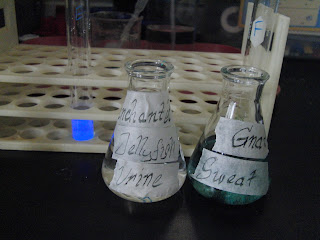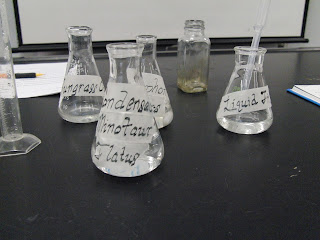Aftwerwards, I have them run through a series of stations that illustrate a different chemical concept. However, since this is a potions themed lesson, I've renamed all of the chemicals to something a bit more...interesting.
Here's a classic vinegar and baking soda experiment. I've changed the concentrations of the vinegar to show how the reaction rate can be controlled. Also, the reaction is being done in a closed system (balloon) so that the "spirit" that is released can be captured.
Here's a reaction with luminol and hydrogen peroxide that produces light. I tell them that they're making a firefly lure potion.
These reactants will precipitate silver, which can stick to the inside of a test tube and make it shiny.
For acid/base chemistry, they'll create a potion that can change into ALL OF THE COLORS OF THE RAINBOOOOOOOOW!!! (with a universal indicator)
Finally, they'll produce "fairy flames" from a variety of fairy samples.





